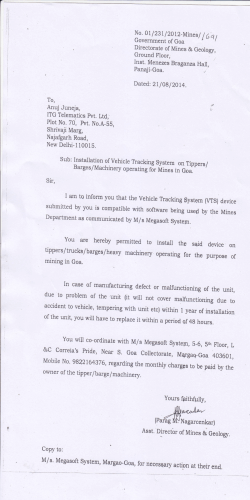
Jobs in 19 Century Mines Background Information:
Background Information: Jobs in 19th Century Mines In early mines, when families would often all work together, each member of the family would play a part. They all helped to mine as much coal as possible, so that the family could make a living. The Hewer The hewer’s job was to mine the coal from the coal seam. He would use hand tools such as a sharp pick. The hewer would have to work in an area no taller than the height of the coal seam, which could be less than 60 cm. The hewer would work with a single candle to enable him to see what he was doing. Image of Hewer from 1842 Children’s Employment Commission (Mines). © NCM M E The Getter This work might be done by a woman. She would shovel the coal produced by the hewer into the coal corves (large baskets) or tubs (small carts), often working on her knees. Sometimes this work would be done by the hewer. The Hurrier Often crawling on hands and knees, the hurrier would pull the tubs or corves of coal along the roadways to the pit-bottom. They had to wear belts attached to a heavy chain. This chain passed © NCMME between their legs and was attached to the coal tub. As the hewer and getter filled the tubs, these were taken away to the pit bottom to be lifted to the surface. The Thruster This job was often done by girls working with a hurrier. The hurrier would pull the tubs and the thruster’s job was to push the tub with her hands and her forehead. Some thrusters might lose their hair by pushing the heavy tubs with their head. Image of Thruster from 1842 Children’s Employment Commission (Mines). © NCM M E The younger children worked in pairs, one as a hurrier, one as a thruster. The older children, and especially women hurriers, worked alone. The Trapper The youngest children in the mine worked as trappers. Children started work as young as five years old. They sat at the wooden ventilation doors, opening them when hurriers brought loaded tubs to the pit-bottom or returned with empties, and closing them again afterwards. It was a very responsible job for such young children as the whole ventilation system of the mine depended on them; one door left open could starve the pit of air. Although it was not a physically hard job it was very boring and lonely. Trappers could not usually afford a candle, and would sit in the dark for long periods. Image of Trapper from 1842 Children’s Employment Commission (Mines). © NCM M E Fact Devlin,R., 1988. Children in the Pit (The Friends of Whitehaven Museum). Gallop,A., 2010. Victoria’s Children of the Dark (The History Press). Hannavy,J., 2009. The Victorians and Edwardians at work (Shire). NCMME Resource pack, Victorian Workers and Child Labour, (NCMME ). Fiction Preece, R., 1992. Danger in the Dark (NCMME). Find out more about the roles of mine workers in the 19th Century on site at the Museum, in the 1842 Gallery and on the underground tour.
© Copyright 2026





















